/ News
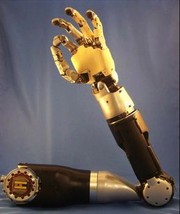
Ten extraordinary Pentagon mind experiments
It’s been 30 years since the first message was sent over initial nodes of the Arpanet, the Pentagon-sponsored precursor to the internet. But this month, researchers announced something that could be equally historic:the passing of messages between two rat brains, the first step toward what they call the “brain net”.
Connecting the brains of two rats through implanted electrodes, scientists at Duke University demonstrated that in response to a visual cue, the trained response of one rat, called an encoder, could be mimicked without a visual cue in a second rat, called the decoder. In other words, the brain of one rat had communicated to the other.
"These experiments demonstrated the ability to establish a sophisticated, direct communication linkage between rat brains, and that the decoder brain is working as a pattern-recognition device,” said Miguel Nicolelis, a professor at Duke University School of Medicine. “So basically, we are creating an organic computer that solves a puzzle."
Whether or not the Duke University experiments turn out to be historic (some skepticism has already been raised), the work reflects a growing Pentagon interest in neuroscience for applications that range from such far-off ideas as teleoperation of military devices (think mind-controlled drones), to more near-term and less controversial technology, like prosthetics controlled by the human brain. In fact, like the Arpanet, the experiment on the rat “brain net” was sponsored by the Defense Advanced Research Projects Agency (Darpa).
The Pentagon’s expanding work in neuroscience in recent years has focused heavily on medical applications, like research to understand traumatic brain injury, but a good portion of the past decade’s work has also been on concepts that are intended to help the military fight wars more effectively, such as studying ways to keep soldiers’ brains alert even after days without sleep. Under the rubric of “Augmented Cognition,” Darpa has also pursued a number of military technologies,like goggles that would monitor a soldier’s brain signals to pick up potential threats before the conscious mind is aware of them.
Now, such work may get an even bigger boost: President Barack Obamais set to announce an initiative that could funnel billions of dollars to the field of neuroscience. That could mean more money for the Pentagon’s forays into brain science.
While some of the applications might be a generation away, or may never arrive, like mind-controlled drones, others, like the brain-monitoring goggles, are already in testing (though probably not ready for use in the field). That’s raising questions from ethicists, who are pushing for the government to begin now to think about “neuro ethics.”
In a 2012 article published last year in the journal Plos Biology, Jonathan Moreno, a professor of medical ethics, and Michael Tennison, a professor of neurology, argued that many neuroscientists don’t think about the contribution of their work to warfare, or consider the ethical implication of such work.
The question they raise is what choice future soldiers might have in such cognitively enhanced warfare. “If a warfighter is allowed no autonomous freedom to accept or decline an enhancement intervention, and the intervention in question is as invasive as remote brain control,” they write, “then the ethical implications are immense.”
Whether this era will come to pass, remains to be seen. But, for now, expect many more advances in the world of neuroscience to come from the Pentagon.
Robo-roach
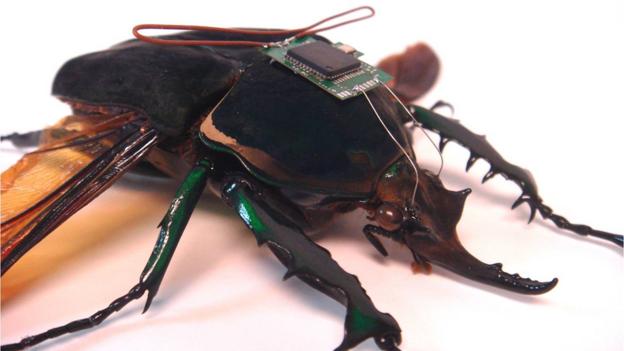
The Pentagon has a long interest in neuroscience, ranging from understanding brain injuries to attempts to turn insects into tiny spies using implanted systems. (Copyright: Darpa)
Wake up sleepy

Darpa's 24/7 soldier programme from a decade ago sought to identify and strengthen parts of a soldier's brain resistant to sleep deprivation. (Copyright: Getty Images)
Monkey see
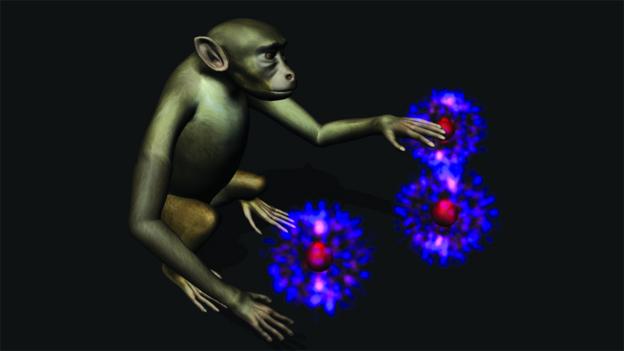
Darpa funded professor, Miguel Nicolelis of Duke University, demonstrated that a monkey with implants can be taught to move a joystick just by thinking. (Copyright: Katie Zhuang)
Mind control
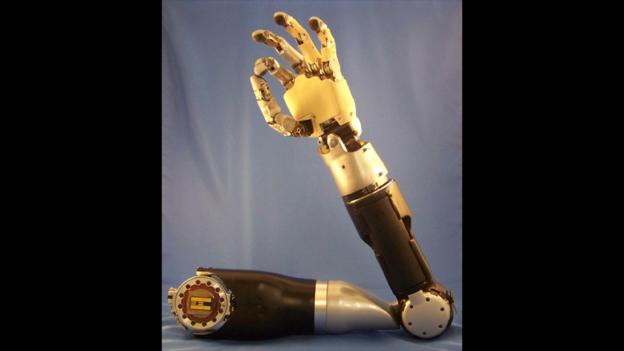
Darpa's "Revolutionizing Prosthetics" programme includes an artificial limb whihc is controlled by the wearer's brain signals. (Copyright: Johns Hopkins University)
Brain to brain
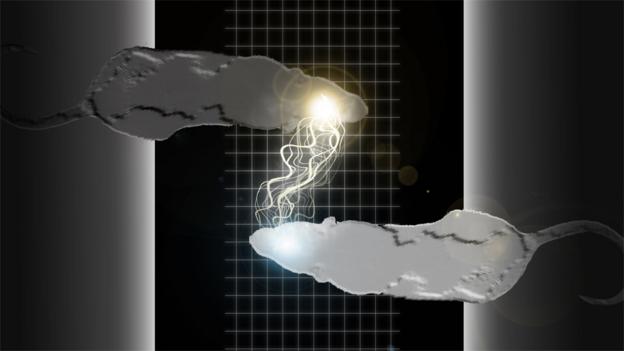
The same researcher who trained a monkey to move a joystick with its mind, recently connected - and passed signals between - two living rats' brains. (Copyright: Katie Zhuang)
Goggle box
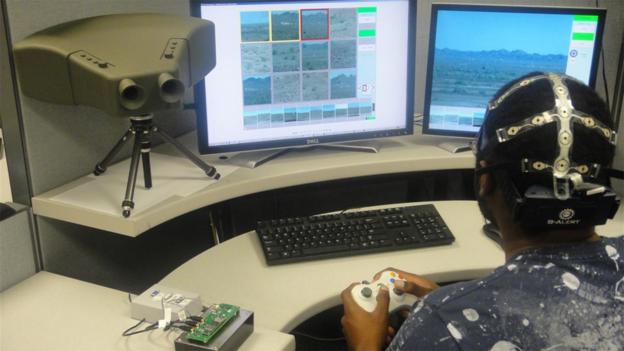
The Cognitive Technology Threat Warning System project aims to build brain goggles that tap the subconscious to detect threats before the wearer's conscious mind.(Copyright: Darpa)
First impressions
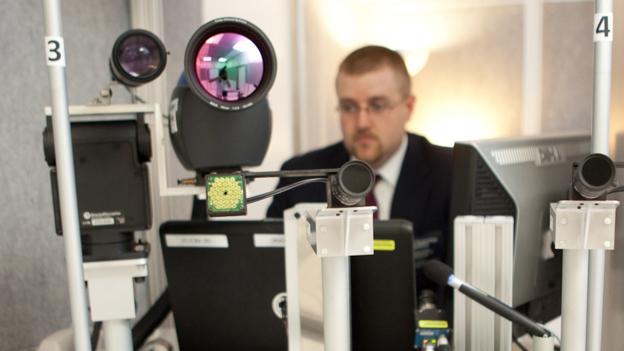
The Future Attribute Screening Technology uses sensors that detect tiny changes in heart rate, gaze, and pupil dilation to screen people at airports. (Copyright: Jane Shauck)
Force field
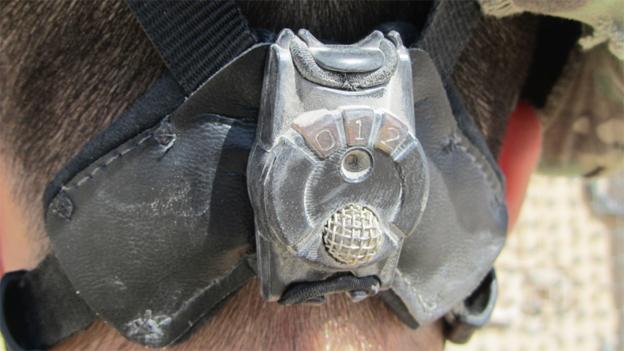
Military brain science is not all mind control: the Darpa Blast Gauge measures exposure to an explosion and helps identify soldiers who may have hidden injuries. (Copyright: Darpa)
Brain boost
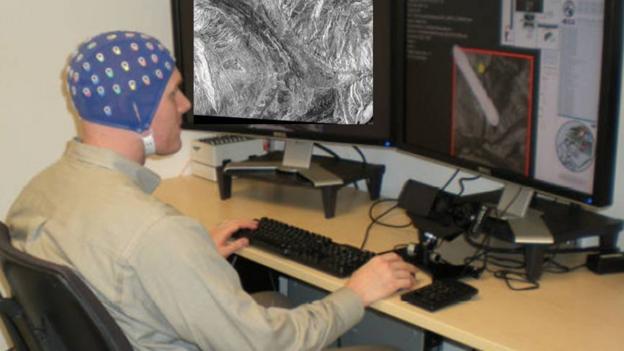
Darpa initiated a progamme to help intelligence analysts identify interesting satellite images. Its filters are trained using brain patterns of skilled personal. (Copyright: Darpa)
Story writers

A recent Darpa program seeks to use cutting-edge neuroscience to develop "narratives" that would influence the thinking a foreign audience. (Copyright: Getty Images)
Source: http://www.bbc.com/future/story/20130311-ten-military-mind-experiments
/ About us
Founded by Russian entrepreneur Dmitry Itskov in February 2011 with the participation of leading Russian specialists in the field of neural interfaces, robotics, artificial organs and systems.
The main goals of the 2045 Initiative: the creation and realization of a new strategy for the development of humanity which meets global civilization challenges; the creation of optimale conditions promoting the spiritual enlightenment of humanity; and the realization of a new futuristic reality based on 5 principles: high spirituality, high culture, high ethics, high science and high technologies.
The main science mega-project of the 2045 Initiative aims to create technologies enabling the transfer of a individual’s personality to a more advanced non-biological carrier, and extending life, including to the point of immortality. We devote particular attention to enabling the fullest possible dialogue between the world’s major spiritual traditions, science and society.
A large-scale transformation of humanity, comparable to some of the major spiritual and sci-tech revolutions in history, will require a new strategy. We believe this to be necessary to overcome existing crises, which threaten our planetary habitat and the continued existence of humanity as a species. With the 2045 Initiative, we hope to realize a new strategy for humanity's development, and in so doing, create a more productive, fulfilling, and satisfying future.
The "2045" team is working towards creating an international research center where leading scientists will be engaged in research and development in the fields of anthropomorphic robotics, living systems modeling and brain and consciousness modeling with the goal of transferring one’s individual consciousness to an artificial carrier and achieving cybernetic immortality.
An annual congress "The Global Future 2045" is organized by the Initiative to give platform for discussing mankind's evolutionary strategy based on technologies of cybernetic immortality as well as the possible impact of such technologies on global society, politics and economies of the future.
Future prospects of "2045" Initiative for society
2015-2020
The emergence and widespread use of affordable android "avatars" controlled by a "brain-computer" interface. Coupled with related technologies “avatars’ will give people a number of new features: ability to work in dangerous environments, perform rescue operations, travel in extreme situations etc.
Avatar components will be used in medicine for the rehabilitation of fully or partially disabled patients giving them prosthetic limbs or recover lost senses.
2020-2025
Creation of an autonomous life-support system for the human brain linked to a robot, ‘avatar’, will save people whose body is completely worn out or irreversibly damaged. Any patient with an intact brain will be able to return to a fully functioning bodily life. Such technologies will greatly enlarge the possibility of hybrid bio-electronic devices, thus creating a new IT revolution and will make all kinds of superimpositions of electronic and biological systems possible.
2030-2035
Creation of a computer model of the brain and human consciousness with the subsequent development of means to transfer individual consciousness onto an artificial carrier. This development will profoundly change the world, it will not only give everyone the possibility of cybernetic immortality but will also create a friendly artificial intelligence, expand human capabilities and provide opportunities for ordinary people to restore or modify their own brain multiple times. The final result at this stage can be a real revolution in the understanding of human nature that will completely change the human and technical prospects for humanity.
2045
This is the time when substance-independent minds will receive new bodies with capacities far exceeding those of ordinary humans. A new era for humanity will arrive! Changes will occur in all spheres of human activity – energy generation, transportation, politics, medicine, psychology, sciences, and so on.
Today it is hard to imagine a future when bodies consisting of nanorobots will become affordable and capable of taking any form. It is also hard to imagine body holograms featuring controlled matter. One thing is clear however: humanity, for the first time in its history, will make a fully managed evolutionary transition and eventually become a new species. Moreover, prerequisites for a large-scale expansion into outer space will be created as well.
Key elements of the project in the future
• International social movement
• social network immortal.me
• charitable foundation "Global Future 2045" (Foundation 2045)
• scientific research centre "Immortality"
• business incubator
• University of "Immortality"
• annual award for contribution to the realization of the project of "Immortality”.



 LinkedIn
LinkedIn
 LiveJournal
LiveJournal
 Google
Google
 Twitter
Twitter
 Facebook
Facebook
 Я.ру
Я.ру
 ВКонтакте
ВКонтакте
 Mail.ru
Mail.ru